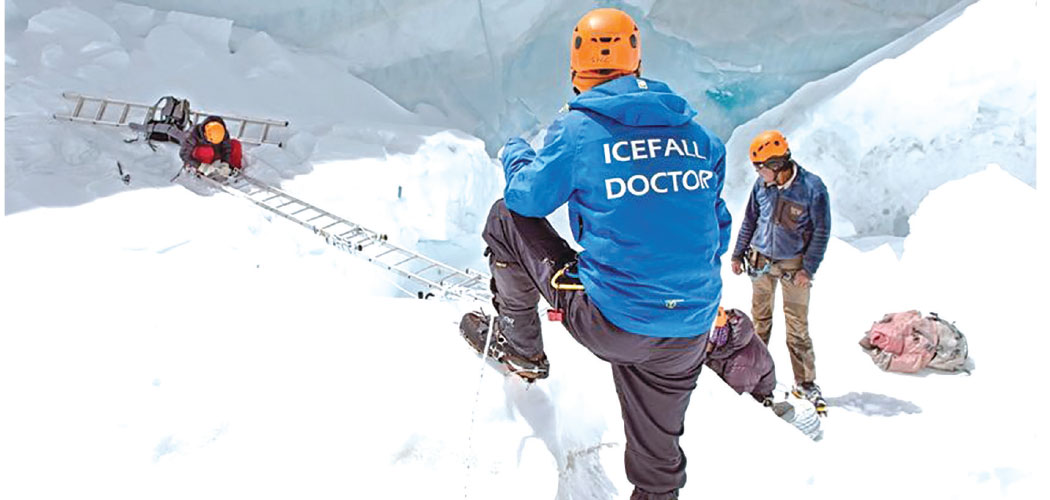
SATV April 07, Kathmandu:: The climbing route for the ‘spring’ season of 2025 to the summit of Sagarmatha (Everest) has been completed.
A nine-member team, including six Icefall Doctors, constructed the route under the coordination of the Sagarmatha Pollution Control Committee (SPCC), Namche. The team began the construction from Everest Base Camp and successfully completed the route.
With the start of the Everest climbing period for the spring season, the team of Icefall Doctors began route construction in the second week of Chaitra (late March). Icefall Doctors are experienced and skilled personnel who specialise in creating routes through snow and ice.
According to Yangji Doma Sherpa, information officer at the SPCC, the team led by Base Camp Managers Chhiring Tenzing Sherpa, Ang Sarki Sherpa, and Dawa Jangbu Sherpa completed the construction. Since 1997, the Department of Tourism, under the Ministry of Culture, Tourism and Civil Aviation, has entrusted the committee with the responsibility of constructing and maintaining the Khumbu Icefall route. The old route damaged by snowfall is identified and reconstructed every year.
The Icefall Doctors connect aluminum ladders to create a path that climbers can follow to reach the summit of Everest. Despite challenging weather conditions, the team worked for 18 hours and installed 2,200 metres of rope, officially opening the Everest climbing season for 2025, informed the committee. From the Khumbu Icefall to Camp 2, tasks such as clearing the snow-covered path, fixing ropes, and placing ladders must be completed. It will help the climbers in ascending the summit.
Between the Everest Base Camp (5,364 metres) and Camp 2 (6,400 metres), there are numerous large and small crevasses. As most crevasses lie below Camp 2, the route construction work must be carried out particularly in this section. Above the Camp 2, there are relatively fewer crevasses. The route construction and rope fixing above the Camp 2 are carried out by the expedition teams' technical staff during the climb itself.
Since the trail construction at the Base Camp is highly risky, a Buddhist lama performs rituals and prayers to determine an auspicious time for beginning the work.
Preparations for route construction typically take about a week at the base camp. As the route must be carved out of snow and ice with the support of ropes, Icefall Doctors say the work must be carried out at great personal risk.
When avalanches occur, they can destroy previously built routes, necessitating repeated construction of paths at the same location. The same base camp is used for climbing Everest, Lhotse, and Nuptse, and the route from the Base Camp to Camp 2 is shared by climbers heading to all three peaks.
Only after SPCC opens and authorises the route, climbers and expedition operators are allowed to proceed to Camp 2. It is also essential because to acclimatise, climbers usually make rotations between Base Camp and Camp 2. Meanwhile, the SPCC has said that no damage has been caused by any recent avalanche. Contrary to some online news reports, the committee has confirmed that ladders, ropes, and other equipment placed on the climbing route have not been affected.
"We request the media and the public to refrain from spreading unverified information. For authentic and timely updates regarding the icefall, please stay in touch with the official channels of SPCC," it said.












